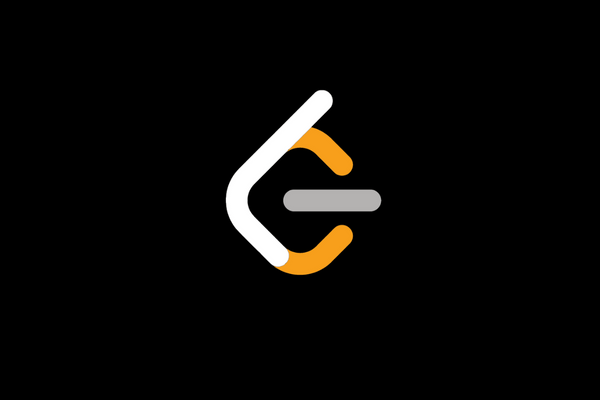90% students do not finish a MOOC, here’s why

Intro
Massive Open Online Courses (MOOCs) have revolutionized the world of learning in recent years. No longer is it necessary to physically attend a brick-and-mortar institution to study subjects such as statistics, computer science, and business. Through the power of the internet, world-class educators and leading researchers can now be accessed from the comfort of your own home. Some platforms offer their courses for free, while others require a small fee or even a hefty sum of money, with the promise of gainful employment at the end of their certification program.
Despite the growing interest in MOOCs, it is true that the majority of students who enroll in these courses do not complete them. Globally, less than 10% of students finish their courses. However, with the right mindset and dedication, anyone can be part of that successful minority.
On Moocable, our team researched and interviewed some members to understand the reasons why most of us are unable to finish a MOOC. During our research, we identified 2 categories of reasons:
1. Reasons related to MOOCs
2. Reasons related to Students
In this article, we will discuss key reasons why students struggle in completing MOOCs.
Reasons related to MOOCs
a. Boring Content 😴
First of all, it's crucial to acknowledge the problem that students often encounter with dry or monotonous content. Additionally, MOOCs can be overly academic and riddled with jargon that may be difficult for those without prior knowledge of the subject to grasp. This can cause students to feel disengaged and unmotivated to finish the course. At Moocable, we had a student who enrolled in a course because she found the topic interesting but quickly became bored with the material once the course began.
This clearly demonstrates that MOOC creators must be aware that content that is too academic and filled with jargon can quickly demotivate individuals from completing their course. MOOC platforms must shift their focus from technology to pedagogy, and implement more interactive learning formats.
Kaggle is an excellent example of interactive learning, where students can learn theory and apply it directly to coding exercises on the same webpage. This type of format keeps students engaged and motivated throughout the course.
b. Unsuitable level of Content 📺
Additionally, one of the challenges students frequently face when completing MOOCs is that creators do not consider the diverse backgrounds and varying levels of learners. To attract more students, most MOOCs are targeted at beginners, which can be unsuitable for those with prior knowledge or experience in a subject, resulting in failure to complete the course.
In order to meet the needs of all learners, MOOC creators should develop courses that cater to intermediate and advanced levels. Moreover, comprehensive programs that guide students from beginner to advanced levels should be created. Coursera’s Specialization, edX’s Professional Certificates, and MicroMasters program serve as excellent examples of such programs.
c. Lecture Fatigue 😩
MOOCs often rely on formal video lectures, which can be an obsolete and inefficient format. To improve the quality of MOOCs, we should rely more heavily on interactive forms of pedagogy. It's important to keep in mind that students have short attention spans, and therefore, we should avoid using brick-and-mortar lecture styles. Research has shown that shorter learning segments, such as videos and texts, are more effective. Creators should be mindful of learning psychology when creating MOOCs and utilize available resources to make the learning experience engaging with shorter segments. The ultimate goal is to teach better and more effectively.
Go visit FreeCodeCamp’s YouTube channel. I’ll list some of their videos:
- Harvard CS50 – Full Computer Science University Course [24 Hours long]
- Android Development for Beginners - Full Course [11 Hours long*
- C++ Programming Course - Beginner to Advanced [24 Hours long]
While these courses are great, it's important to pace yourself and study for short durations every day. Unfortunately, pacing can be challenging, especially at the beginning of a MOOC. One of our students shared that they had tried completing a 6-week course in just one week and found it overwhelming. Therefore, it's essential to be patient and break the course into smaller parts to avoid burnout.
d. Poor peer grading 👎
MOOCs are often criticized for the lack of feedback from the professor. Instead, feedback is given by algorithms and peers. Unfortunately, the latter can be less than constructive at times.
As one student reported, "I chose to stop doing the peer response section of the class due to some students being treated rudely [by other students]; in fact, the entire peer response section of the class is done in a way I would NEVER have asked of students in a classroom."
Grading and feedback is a major challenges in online learning. In my article, "The Problems with Peer Grading on Coursera”, I outlined three main reasons for this:
1. Plagiarism/Cheating: Plagiarism is rampant among students, with some even stealing answers from their peers. A few keywords, often taken from the assignment prompt itself, is usually all that's needed to find solutions online. Some popular courses even have complete walkthroughs on YouTube. Although providers usually ask students to uphold an Honor Code, sometimes by checking a box before submitting an assignment, it does little to deter motivated cheaters.
2. Delays: Delays occur when no one is available to review your assignment. Some course forums are full of pleas to "Please assess my assignment". Since students are not studying synchronously, you might have to wait till another student completes the assignment and shares his feedback. This problem is worsened when students enroll in a specialization and pay on a monthly subscription basis. Due to delays you might end up paying for an extra month.
3. Lack of Quality Feedback: While essay-styled feedback sounds great on paper, in reality, most students do not give critical feedback on their work. Moreover, there is no way for you to give feedback on feedback. If a student provides low-quality feedback, or improper feedback (due to the student's misunderstanding), there is no way you can correct your peer and try to clarify his error. Thus, erroneous feedback is considered feedback.
e. Cost 💸
Students often face challenges with the cost of MOOCs. While some platforms like Udemy only offer paid access, others, like Coursera and edX, allow you to audit their courses for free. However, if you wish to submit your work, receive grades, and earn a certificate, you will need to pay a certain fee.
Further reading:
- A Guide on How to Sign up for Coursera Courses for Free
- A Guide on How to Sign up for edX Courses for Free
During our interviews with students, we discovered that most were either satisfied with auditing the course or unable to afford the MOOC fee. Common responses included:
- “I really liked the course. I watched all the lectures, even completed all the assignments. But, in order to submit my work and receive feedback, I had to pay some fee.”
- “The MOOC was good, yes. I might have paid for the certificate, but as a college student I couldn’t afford it”
In rare cases, students encountered hidden costs associated with MOOCs. They enrolled in a program for little to no cost, but were later charged unexpected fees by the MOOC provider. This was a major disappointment for the students, leading them to withdraw from the program immediately.
Reasons related to the Student
It's important to note that not all reasons for a student not completing a MOOC are related to design. More often than not, students struggle with studying the course, poor time management, or bad goal setting. Additionally, some students simply lack interest in completing MOOCs. They may "window shop" MOOCs or only refer to them for specific topics rather than completing them in their entirety.
a. No Clear Goals 🥅
Learning solely for the sake of learning is a noble pursuit. However, developing and implementing this philosophy may not be suitable for novice learners. Most of us do not have a tangible objective when we enroll in a MOOC. Of course, it is perfectly acceptable to enroll in a MOOC without a goal in mind. But, if you are investing your time (and money) in studying a MOOC, you should establish clear expectations and outcomes.
I often recommend that students create a macro and micro plan. A macro plan is a high-level overview of a project. It is brief and succinct, hitting only the essential highlights--the things you need to know to accomplish your objective, without any unnecessary fluff or overly-detailed scheduling. Conversely, a micro plan involves an abundance of details and an intensive schedule to accomplish the work.
It is essential to have a definite objective in mind before enrolling in a program. Most of us are unaware of what we want to achieve through a MOOC.
For instance, your macro plan could be:
Complete a Web Development Specialization in 4 months.
The micro plan entails creating a day-to-day schedule of when, where, and how you will achieve that goal.
Therefore, a sample micro plan may look like this:
Monday: 7:00 p.m. - 8:30 p.m. - Study Module 1 & 2 from the course
Thursday: 6:00 p.m. - 7:00 p.m. - Complete all the exercises for the week.
Sunday: 9:00 a.m. - 1:00 p.m. - Work on my front-end website project.
b. Lack of Planning 📅
Most students start a study program with high expectations. They envision themselves being successful in their studies but they fail to put together a realistic plan or establish a routine, that will enable them to achieve success.
There are only so many hours in a day, days in a week, and weeks in a term. And if you don't pay attention, the end of the semester will arrive before you know it – catching you by surprise.
Most of us struggle with studying regularly along with full-time college/work. Studying a MOOC for more than a few days is no easy feat.
Apart from study time, you should actively set some time to rest and relax. Your mind (and body) needs time to process everything you’ve learned, and get ready for another session.
c. Struggle with discipline (especially with asynchronous courses) 💪
It is generally true that self-study requires commitment and self-discipline. In most cases, especially for asynchronous MOOC courses, learners may not be motivated enough to keep up with their online content. In synchronous eLearning, however, this is part of the duties of the facilitator of the MOOC course.
Learning on your own is difficult. Apart from the drawbacks of peer-grading and lack of decent communication tools, studying self-paced courses can also be a challenge emotionally. It’s very easy to switch from active learning mode to passive learning mode, when studying on your own. MOOC creators should ensure that the material is engaging enough, plus, students need to learn how to keep themselves engaged and committed.
d. Higher education means higher expectations
Students who have attained Bachelor’s degrees are generally more enthusiastic about MOOCs than those who put in more years of study to attain a Doctoral degree. This makes sense if we consider the advanced classes and rigorous research supervision that is seldom, if ever, found in online learning platforms.
Similarly, an experienced software engineer is going to find an introductory CS MOOC unengaging and wouldn’t complete it. There are a number of variables involved: students’ prior background, MOOC platform, MOOC difficulty, and format. Make sure you look at the MOOC’s “requirements” and “expectations” webpage before you enroll in the course.
e. Just shopping around 🛒
We live in the age of abundance. You can access anything, anytime. And while this has great benefits, the plethora of choices makes us numb and confused. We develop a hoarding mentality - registering for multiple courses at a time with full gusto, only to end up not finishing even one, at the end of the month. You shop for courses, which involves registering for many courses, keeping some, and dropping others. That inflates the low completion rate, but it gives you freedom. As one student said, “I am very, very happy about being able to be so picky.”
There’s are many perks behind this, sure. Students have more choices and autonomy. But, in reality, most learners are actually worse off for all this cheap, abundant content — it’s become clear over the years that more access does not translate to more engagement.
f. You’re There to Learn, Not for the Credential at the End 🎓
Sometimes student do not finish a MOOC because that’s not their primary goal. Some students enroll in MOOCs only to refer certain modules or topics inside. Once they learn what’s necessary, they do not bother completing the MOOC. Sometimes you do everything (watch the videos, do the readings, etc.) but do not take the final exam. In a certain way, you’re auditing, which suits many of you just fine. It’s precisely what you want to do. But that, too, makes the low completion rates look worse than they maybe are.
Conclusion
By no means do MOOCs only have disadvantages. Despite the extensive critique they have received they still consist one of the best choice to extend the limited horizons of your online class and help you address to a bigger audience. As discussed above, sometimes a low completion rate does not necessarily mean lower engagement.
MOOC creators need to differentiate and provide material for every kind of learner, not just beginner. They should start experimenting with new formats of eLearning.
Finally, students should be more mindful about their goals and objectives before enrolling in a MOOC. Practice healthy study habits, and learn how to complete what you started.



